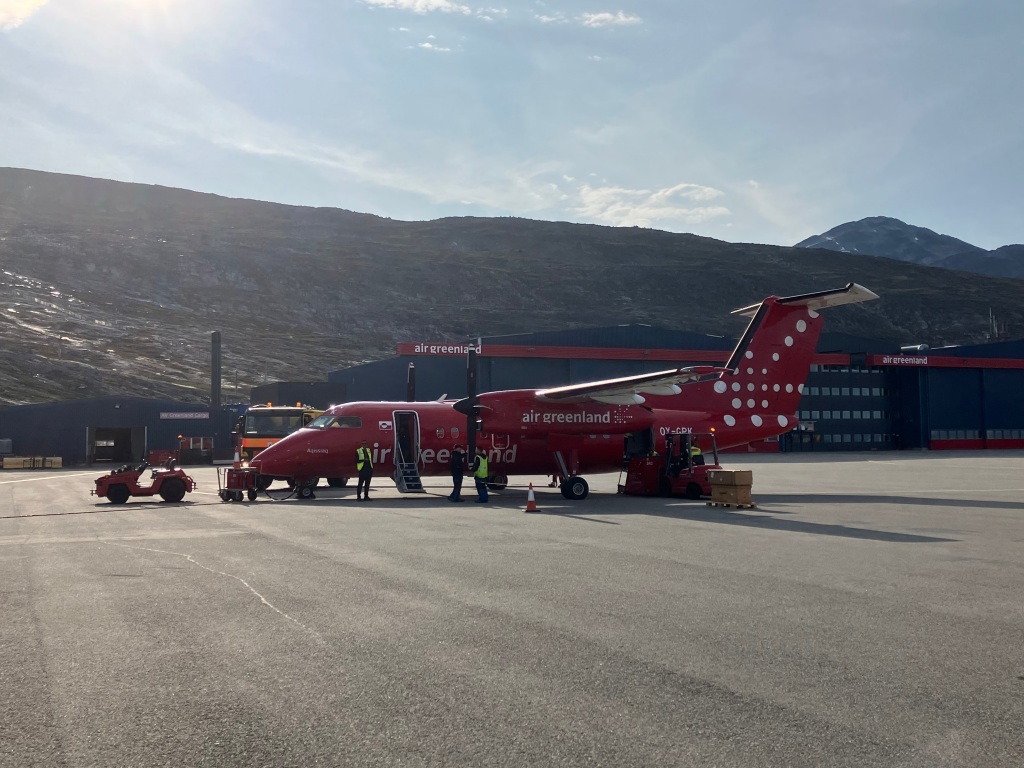
by Marc Lanteigne
It was in 1954, after two years of test flights, when Scandinavian Airline Systems (SAS) successfully began a Copenhagen to Los Angeles route over the north polar region (with stops in Kangerlussuaq, Greenland and Winnipeg), using DC6 aircraft. These trips opened up the possibility of shorter transits between Europe and North America, making use of potential new ‘great circle’ flightpaths closer to the North Pole. In 1983, Finnair, which had begun to expand its business to include Asia travel options, started the first nonstop flights via the Arctic, between Helsinki and Narita Airport in Tokyo.
With improved technology and navigational capabilities, the airspace within the Arctic Circle is being looked at with much interest by aviation businesses, especially as the far north continues to open to expanded economic activities, including tourism.
At the same time, post-cold war air routes between Europe and Asia, which made frequent use of Russian airspace, have now been closed to numerous Western airlines since the February 2022 invasion of Ukraine, while the United States, Canada, and most of Europe have all banned Russian aircraft from their airspaces. The security situation over the past two years has thus made the Arctic Circle an even more attractive alternative for transcontinental flights.
For example, since early 2022, Finnair’s Helsinki-Tokyo routes now circumvent Russia, and include flights well into the central Arctic Ocean region, (passengers along that route receive a diploma testifying that they have flown over the North Pole). This northern route takes about thirteen hours to complete, compared with nine to ten hours the pre-2022 flightpath required.

There have also been significant changes in the past year which have affected flights to Arctic destinations, responding to both consumer demand as well as closer economic cooperation between far northern governments. In Greenland, the island’s largest airport in Nuuk is currently under expansion, along with an enlargement of its runway.
This process caused a brief political stir in 2018 when the governments of Denmark and the United States worked to thwart a planned bid by a Beijing-based firm (the China Communications Construction Company, or CCCC), to finance the refurbishment of Nuuk’s airport and others on the island. Denmark would ultimately take the lead in assuming those expenses, prompting a backlash within Greenland’s coalition government at the time.
The enlargement of Nuuk Airport, as well as the facilities at Ilulissat, will affect the status of the airport at Kangerlussuaq, which has been Greenland’s main transportation hub for many years. The small town was originally the site of the American Sondrestrom Air Force Base before the site was transferred to the government of Greenland in 1992.
In April 2023, it was confirmed that the Danish military would continue to make use of Kangerlussuaq, and civilian flights would also go there, details had yet to be confirmed. It had been agreed [in Danish] by Copenhagen in Nuuk in September 2019 that the Danish Armed Forces could continue to use Kangerlussuaq. In November this year, an announcement was made that Kangerlussuaq would also be the site of a new Arctic basic training programme for Greenland residents, set to launch in 2024.
The improved facilities at Nuuk Airport are expected to be fully opened by late 2024, and carrier Air Greenland is planning new routes in anticipation of a growing number of visitors. In October 2023, the airline announced a new summer route between Aalborg and Kangerlussuaq for next year, as well as additional Greenland to Denmark flights. As well, in the wake of new interline agreements announced the same month with Canadian North, Icelandair and SAS, Air Greenland will tap into a wider array of routes connecting Europe and North America.
The Greenlandic government is hopeful that the updated airports and new routes will bolster the island’s nascent tourism industry as interest in the Arctic continues to grow, as evidenced by the visitor boom in next-door Iceland over the past two decades which was only briefly interrupted by the global pandemic.
Another Arctic air route announced this past October would be Air Greenland flights during summer months between Nuuk and Iqaluit, Nunavut. This routing had previously been attempted in 2012, at a time when there was still much regional enthusiasm about Greenland being at the centre of an Arctic economic and resource boom, prompted by changed weather conditions and growing demand for raw materials in the region. However, the flights at the time proved to be financially unsustainable, and were suspended in 2015.

It was hoped, however, that the improved air facilities at Nuuk could help make the Iqaluit run viable, and that a revival of the link could also build upon improved national and local level links between Canada and Greenland, which had included in the long-awaited settlement of the political status of Hans Island / Tartupaluk in June 2022, (resulting in a 1.28km land border between the two nations), and the demarcation of the nearby maritime boundary.
As well, Nuuk and Ottawa had announced last October that they would be working together on projects to conserve the ecosystem of Pikialasorsuaq (North Water Polynya) in the waters separating Greenland and Canada’s Ellesmere and Devon Islands.
The Iqaluit-Nuuk flights are scheduled to commence, using De Havilland (Canada) Dash-8 planes, in June 2024, with tickets being available next month. Canadian North is also planning flights from Ottawa via Iqaluit to Nuuk from June to October of next year. The challenge now, as then, will be competition with traditional regional airlinks including via Keflavik and Copenhagen.
The proliferation of new air routes and destinations within the Arctic Circle has become another key factor in the economic opening of the Arctic, as well as political and development cooperation between regional governments. Next year may be a significant one for Arctic travel and its social, financial and economic effects on local communities.
[The author would like to thank Mikkel Schøler for his comments on an earlier draft of this article.]